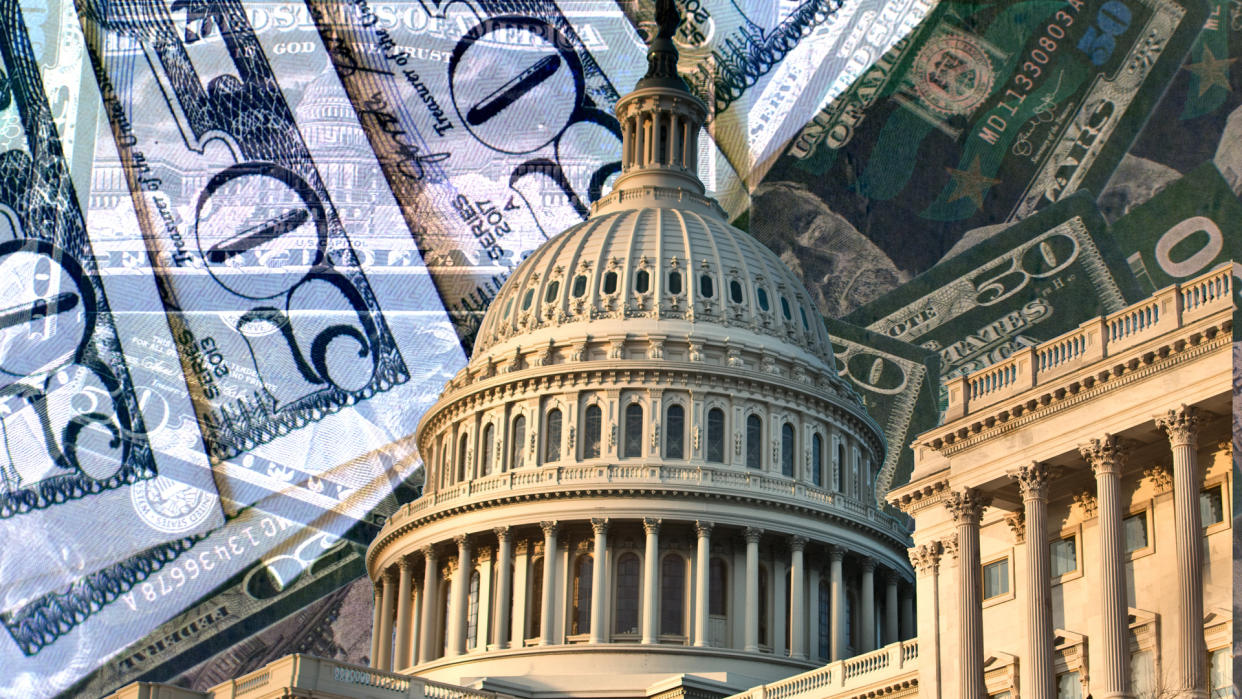Spike Cohen Asks If Social Security or the Military Is Government’s Most Expensive Program — Here’s the Harsh Reality

When it comes to federal government spending, two of the biggest outlays every year are for Social Security and national defense. But neither of those suck up as much of the federal budget as one other item, according to entrepreneur and Libertarian political activist Spike Cohen.
See: 4 Social Security Shakeups from Biden That Could Hit Your Wallet by 2024
Find: 3 Ways To Recession-Proof Your Retirement
In a July 31 post on X, formerly known as Twitter, Cohen wrote that “the most expensive single program is paying the interest on the debt that Republicans and Democrats in Washington DC have run up in your name.” The amount of that interest is higher than either military spending or Social Security, he claimed.
First Year of Retirement: 7 Money Moves You Absolutely Must Make
“Thanks to decades of debt spending, which every Congress in our lifetimes has passed, and every President in our lifetimes has signed, it will cost nearly a trillion dollars this year just to pay the interest on the debts they’ve run up,” Cohen wrote.
At the bottom of his tweet, Cohen provided what looks like a screenshot of an unspecified fiscal year budget, though presumably it is the federal government’s fiscal 2023 budget.
Cohen’s chart shows that estimated interest on Treasury debt securities will total $897.7 billion for the year. That compares to $771.2 billion for U.S. Department of Defense military programs. The budget estimate for the Department of Health and Human Services — which includes Social Security and Medicare — was $1.7 trillion, though there was no further breakdown on specific HHS expenditures.
GOBankingRates reviewed various government budget documents for fiscal 2023 but could not find the Treasury debt or military spending figures Cohen cited. That doesn’t mean they aren’t accurate, though they don’t line up with figures from certain other sources.
For example, a May 2023 analysis from the Peter G. Peterson Foundation — a nonprofit, nonpartisan fiscal watchdog group — said that spending on national defense totaled $766 billion in 2022, while spending on interest payments on the federal debt totaled $476 billion. The biggest outlay was Social Security, at $1.22 trillion.
As the Peter G. Peterson Foundation noted, spending in the federal budget is grouped into categories known as budget “functions.” Each function includes a group of activities or programs that serve a similar public purpose. Here are the largest budget functions for 2022, according to the Foundation, which cited data from the U.S. Office of Management and Budget:
Social Security ($1,219 billion): This includes the two programs administered by the Social Security Administration — retirement benefits and disability insurance.
Health ($914 billion): The Health function includes most direct healthcare services funded by the federal government other than Medicare, such as Medicaid, the Children’s Health Insurance Program, and activities carried out by agencies such as the National Institutes of Health, Centers for Disease Control and Prevention and the Food and Drug Administration.
Income Security ($866 billion): This includes programs that provide cash and other government assistance to individuals in need, such as the Supplemental Nutrition Assistance Program (SNAP), Supplemental Security Income and Temporary Assistance for Needy Families.
National Defense ($766 billion): This function covers the military activities of the Department of Defense. Some funding also goes toward defense-related activities of other departments, such as Department of Energy nuclear programs and the FBI.
Medicare ($755 billion): The Medicare function consists entirely of the Medicare program, which provides health insurance to Americans 65 or over and people with disabilities.
Education, Training, Employment, and Social Services ($677 billion): This function includes federal funding for the Department of Education and social service programs administered by a variety of agencies to educate and train workers.
Net Interest ($476 billion): The Net Interest function includes interest payments on the federal debt paid to private holders of U.S. Treasury securities. It is partially offset by interest income on loans as well as earnings from the National Railroad Retirement Investment Trust.
More From GOBankingRates
The Great Wealth Transfer: How Baby Boomers Are Passing on Trillions to Heirs
Costco's Trade-Up Program Will Give You Free Groceries in Exchange for Your Old Electronics
This article originally appeared on GOBankingRates.com: Spike Cohen Asks If Social Security or the Military Is Government’s Most Expensive Program — Here’s the Harsh Reality
